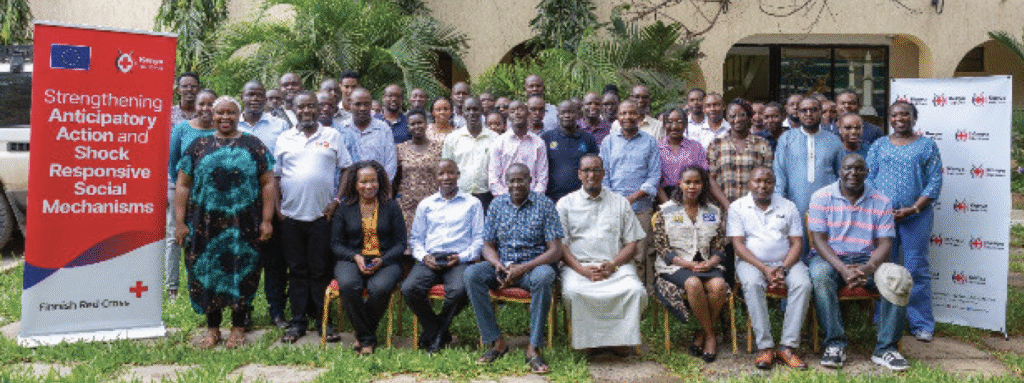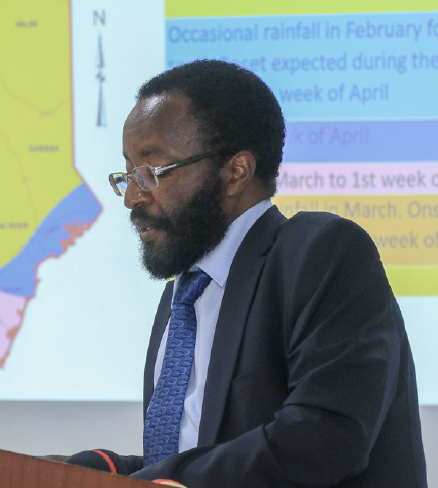Insights from the Garissa National Climate Outlook Forum

The National Climate Outlook Forum (NCOF) User Interface Platforms (UIPs) serve as crucial forums for enhancing access, use, and application of seasonal forecasts through Impact-Based Forecasting (IbF). These platforms facilitate dialogue between climate information producers and users, improving co-production processes, defining stakeholder roles, and reinforcing institutional coordination.
In line with these objectives, the Kenya Red Cross Society (KRCS), International Centre for Humanitarian Affairs (ICHA), World Food Programme (WFP), Kenya Meteorological Department (KMD), Regional Centre for Mapping of Resources for Development (RCMRD), National Disaster Operations Centre (NDOC), and other partners convened a two-day workshop in Garissa. The forum focused on deliberating the March-April-May (MAM) 2025 seasonal forecast and advancing the IbF agenda in Kenya.

Key Objectives of the IbF Workshop
The workshop covered several key objectives, including:
- Developing an information-gathering checklist for existing national IbF frameworks.
- Identifying necessary data types for effective IbF implementation at the national level.
- Strengthening multi-sectoral partnerships to operationalize IbF.
- Enhancing stakeholders’ technical knowledge of IbF concepts and methodologies.
Key discussions and Technical Sessions
This session provided insights into IbF tools, methodologies, and indicators used by organizations such as KMD, Water Resources Authority(WRA), NationalDrought Management Authority (NDMA), RCMRD, WFP, and county governments. Discussions highlighted:
- The necessity of a common platform for knowledge-sharing and coordination.
- The need to clarify institutional roles, particularly in flood forecasting between KMD and WRA.
- Addressing gaps in coordination and collaboration to enhance IbF effectiveness.
- Exploring innovative approaches and consolidating duplicated efforts to optimize resources
In sector-based group discussions, participants identified key predictive indicators for IbF by:
- Defining hazards and their impacts within specific sectors.
- Establishing indicators for each identified impact.
- Mapping exposure and vulnerability data.
- Identifying primary target groups at risk.
- Integrating this data with the MAM 2025 seasonal forecast to inform appropriate anticipatory actions.

